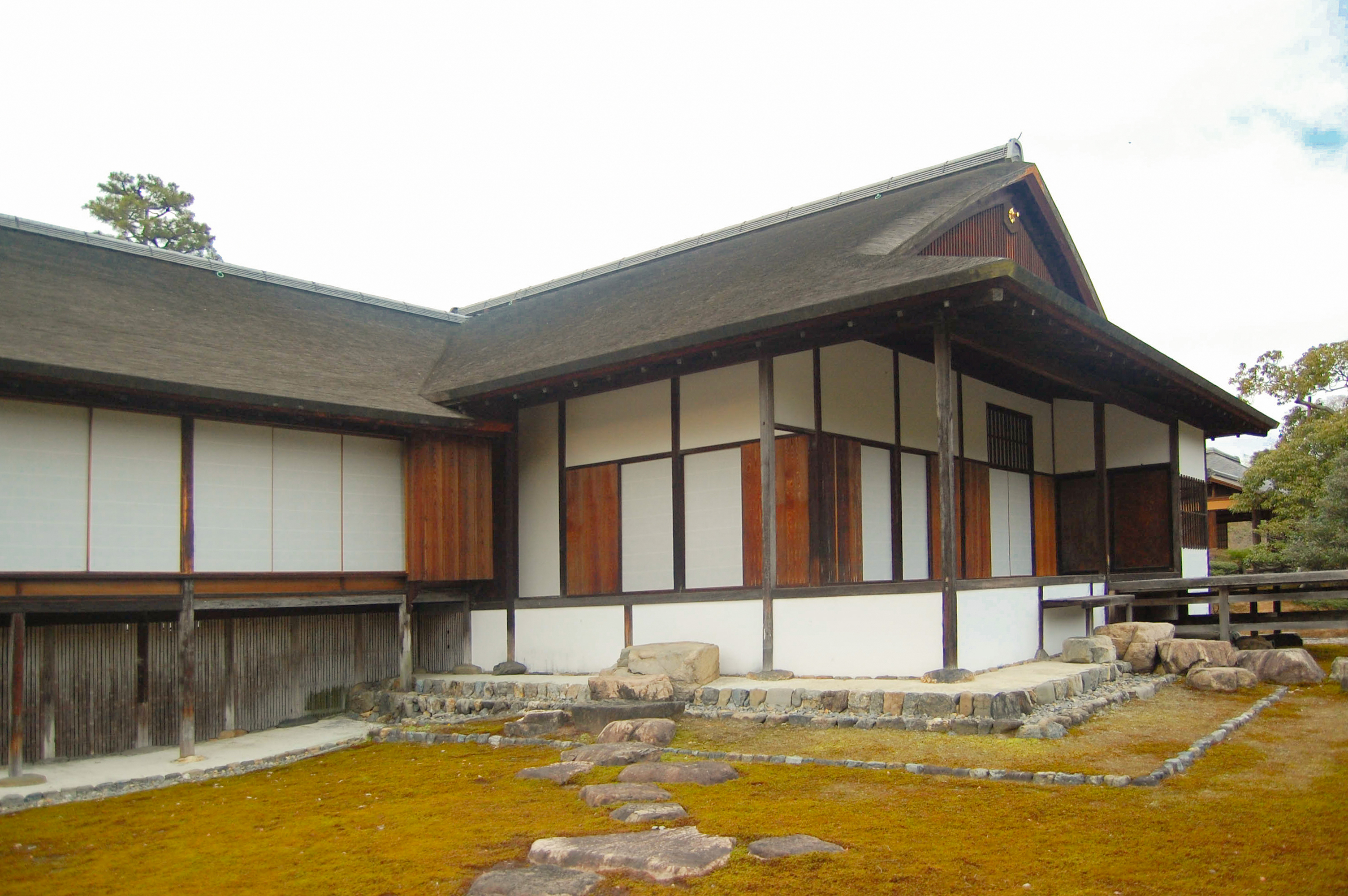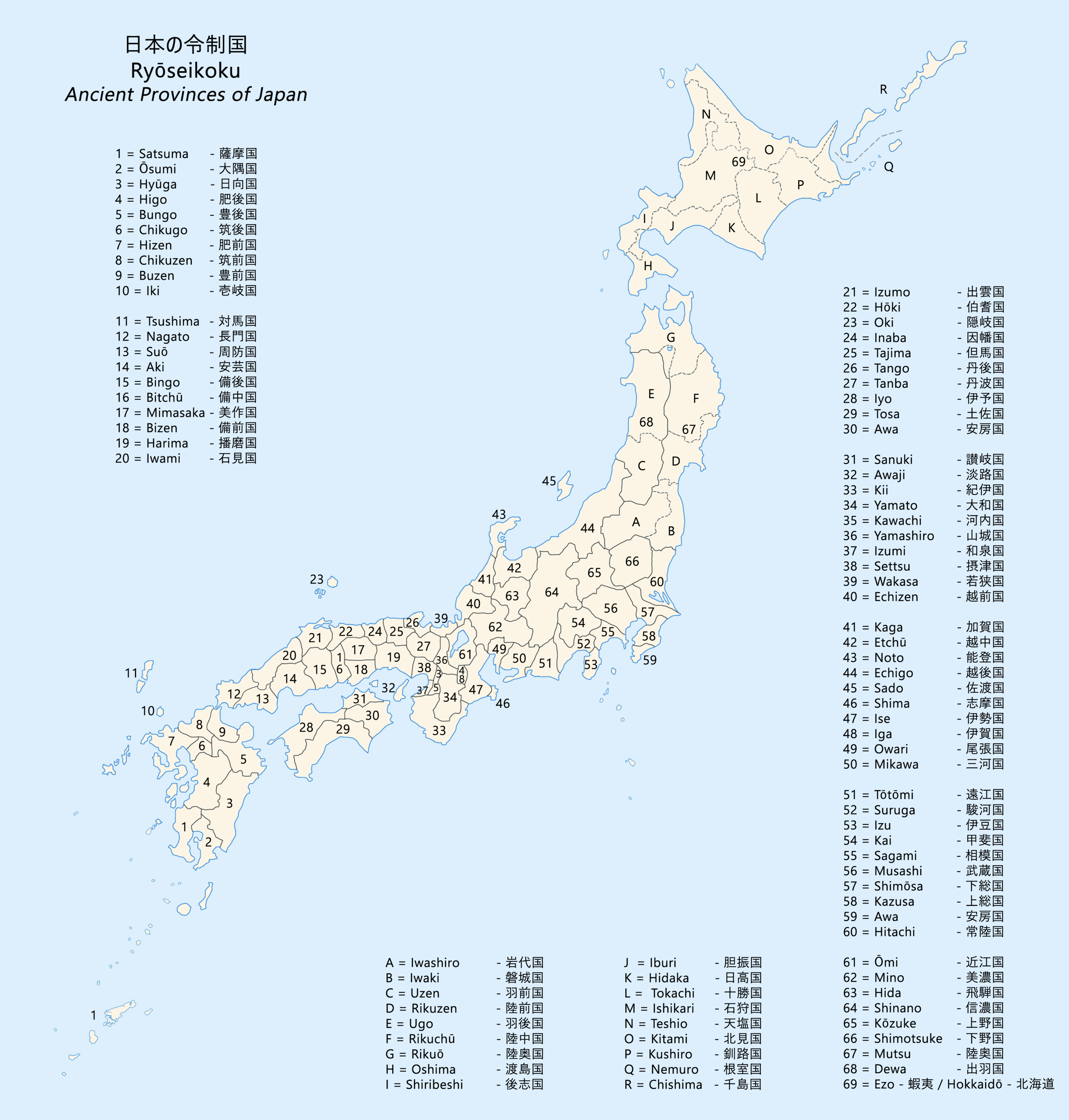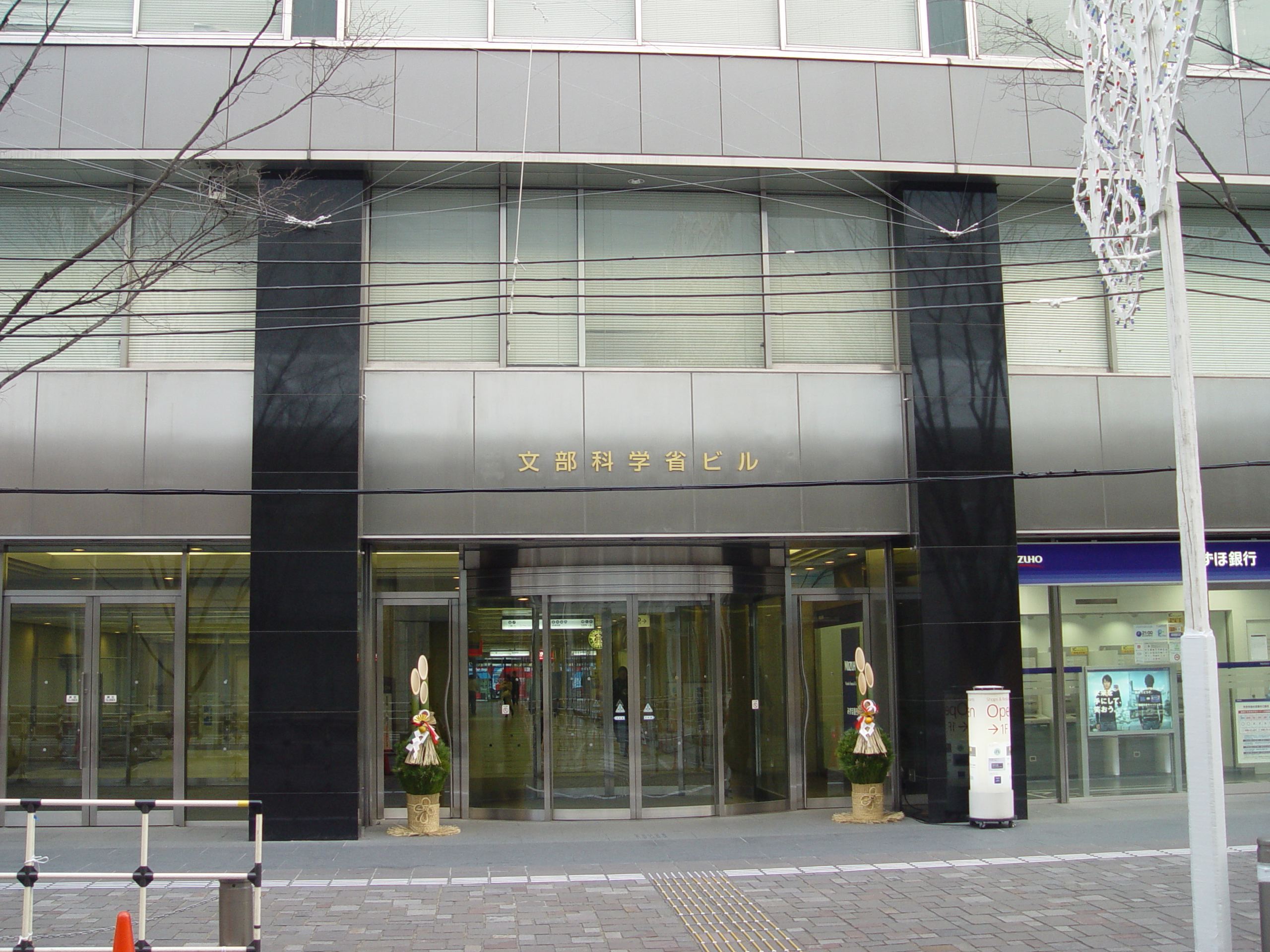|
Shōryaku-ji
is a Shingon temple in the southeast of Nara, Japan. Founded in 992, it is the head temple of the Bodaisen Shingon sect. History Shōryaku-ji is said to have been founded by , son of Fujiwara no Kaneie, in 992, at the behest of Emperor Ichijō. The temple burned to the ground in the 1180 assault on Nara by Taira no Shigehira. Revived the following century, Shōryaku-ji fell into decline in the Edo period and most of the buildings of the garan have been lost. Buildings The Hondō and Shōrō are from the Taishō period (1916 and 1925 respectively). The sukiya-style reception hall from Enpō 9 (1681) is an Important Cultural Property. Treasures The honzon, a gilt bronze Yakushi Nyorai of the Asuka period, is a hibutsu. It has been designated an Important Cultural Property, alongside a Southern Song celadon bowl excavated from the precinct, and scroll thirty from a Nara-period Ekottara Agama The Ekottara Āgama (Sanskrit; ) is an early Indian Buddhist text, of ... [...More Info...] [...Related Items...] OR: [Wikipedia] [Google] [Baidu] |
Nara, Nara
is the capital city of Nara Prefecture, Japan. As of 2022, Nara has an estimated population of 367,353 according to World Population Review, making it the largest city in Nara Prefecture and sixth-largest in the Kansai region of Honshu. Nara is a core city located in the northern part of Nara Prefecture bordering the Kyoto Prefecture. Nara was the capital of Japan during the Nara period from 710 to 794 as the seat of the Emperor before the capital was moved to Kyoto. Nara is home to eight temples, shrines, and ruins, specifically Tōdai-ji, Saidai-ji, Kōfuku-ji, Kasuga Shrine, Gangō-ji, Yakushi-ji, Tōshōdai-ji, and the Heijō Palace, together with Kasugayama Primeval Forest, collectively form the Historic Monuments of Ancient Nara, a UNESCO World Heritage Site. Etymology By the Heian period, a variety of different characters had been used to represent the name Nara: , , , , , , , , , , , , , , , and . A number of theories for the origin of the name "Nara" ha ... [...More Info...] [...Related Items...] OR: [Wikipedia] [Google] [Baidu] |
Sukiya-zukuri
is one type of Japanese residential architectural style. ''Suki'' means refined, well cultivated taste and delight in elegant pursuits and refers to enjoyment of the exquisitely performed tea ceremony. The word originally denoted a building in which tea ceremony was done (known as a ''chashitsu'') and was associated with ''ikebana'' flower arranging, and other Japanese traditional arts. It has come to indicate a style of designing public facilities and private homes based on tea house aesthetics. Historically and by tradition, ''sukiya-zukuri'' is characterised by a use of natural materials, especially wood. In contemporary architecture, its formal and spatial concepts are kept alive in modern materials such as steel, glass and concrete. Origins In 1587, Toyotomi Hideyoshi (1536–98) employed the tea master Sen no Rikyū as his advisor on aesthetic matters. In the compound of Hideyoshi's imposing Jurakudai castle in Kyoto Rikyū designed an eighteen mat building known as th ... [...More Info...] [...Related Items...] OR: [Wikipedia] [Google] [Baidu] |
Kamakura Period
The is a period of Japanese history that marks the governance by the Kamakura shogunate, officially established in 1192 in Kamakura by the first '' shōgun'' Minamoto no Yoritomo after the conclusion of the Genpei War, which saw the struggle between the Taira and Minamoto clans. The period is known for the emergence of the samurai, the warrior caste, and for the establishment of feudalism in Japan. During the early Kamakura period, the shogunate continued warfare against the Northern Fujiwara which was only defeated in 1189. Then, the authority to the Kamakura rulers waned in the 1190s and power was transferred to the powerful Hōjō clan in the early 13th century with the head of the clan as regent ( Shikken) under the shogun which became a powerless figurehead. The later Kamakura period saw the invasions of the Mongols in 1274 and again in 1281. To reduce the amount of chaos, the Hōjō rulers decided to decentralize power by allowing two imperial lines – Northern and Sout ... [...More Info...] [...Related Items...] OR: [Wikipedia] [Google] [Baidu] |
Agency For Cultural Affairs
The is a special body of the Japanese Ministry of Education, Culture, Sports, Science and Technology (MEXT). It was set up in 1968 to promote Japanese arts and culture. The agency's budget for FY 2018 rose to ¥107.7 billion. Overview The agency's Cultural Affairs Division disseminates information about the arts within Japan and internationally, and the Cultural Properties Protection Division protects the nation's cultural heritage. The Cultural Affairs Division is concerned with such areas as art and culture promotion, art copyrights, and improvements in the national language. It also supports both national and local arts and cultural festivals, and it funds traveling cultural events in music, theater, dance, art exhibitions, and film-making. Special prizes are offered to encourage young artists and established practitioners, and some grants are given each year to enable them to train abroad. The agency funds national museums of modern art in Kyoto and Tokyo and The Nati ... [...More Info...] [...Related Items...] OR: [Wikipedia] [Google] [Baidu] |
Nara National Museum
The is one of the pre-eminent national art museums in Japan. Introduction The Nara National Museum is located in Nara, which was the capital of Japan from 710 to 784. Katayama Tōkuma (1854–1917) designed the original building, which is a representative Western-style building of the Meiji period and has been designated an Important Cultural Property in Japan. Junzō Yoshimura (1908–1997) designed a supplemental building in 1973. Collections The museum is noted for its collection of Buddhist art, including images, sculpture, and altar articles. The museum houses and displays works of art belonging to temples and shrines in the Nara area. Properties kept in the Shōsōin repository are exhibited each year in the autumn. In the museum's collection is the 12th-century , 11th or 12th-century mandala Jōdo mandara-zu, and the 9th-century sculpture of the seated Buddha Yakushi. History The Nara National Museum was established in 1889 as the Imperial Nara Museum ''(帝国奈� ... [...More Info...] [...Related Items...] OR: [Wikipedia] [Google] [Baidu] |
Ekottara Agama
The Ekottara Āgama (Sanskrit; ) is an early Indian Buddhist text, of which currently only a Chinese translation is extant (Taishō Tripiṭaka 125). The title ''Ekottara Āgama'' literally means "Numbered Discourses," referring to its organizational principle. It is one of the four Āgamas of the Sūtra Piṭaka located in the Chinese Buddhist Canon. Origins and history A complete version of the Ekottara Āgama was translated by Dharmanandi in 384 CE, and edited by Gautama Saṃghadeva in 398 CE. Some believed that it came from the Sarvāstivāda school, but more recently the Mahāsāṃghika branch has been proposed as well. Scholars such as Yin Shun, Zhihua Yao and Tse Fu Kuan consider the Ekottara Āgama to belong to the Mahāsāṃghika school.Zhihua Yao (2012) ''The Buddhist Theory of Self-Cognition,'' pp. 8-10. Routledge. According to A.K. Warder, the Ekottara Āgama references 250 Prātimokṣa rules for monks, which agrees only with the Dharmaguptaka Vinaya, whic ... [...More Info...] [...Related Items...] OR: [Wikipedia] [Google] [Baidu] |
Nara Period
The of the history of Japan covers the years from CE 710 to 794. Empress Genmei established the capital of Heijō-kyō (present-day Nara, Nara, Nara). Except for a five-year period (740–745), when the capital was briefly moved again, it remained the capital of Japanese civilization until Emperor Kanmu established a new capital, Nagaoka-kyō, in 784, before moving to Heian-kyō, modern Kyoto, a decade later in 794. Japanese society during this period was predominantly agricultural and centered on village life. Most of the villagers followed Shinto, Shintō, a religion based on the worship of natural and ancestral spirits named ''kami.'' The capital at Nara was modeled after Chang'an, the capital city of the Tang dynasty. In many other ways, the Japanese upper classes patterned themselves after the Chinese, including adopting the Chinese writing system, Chinese fashion, and a Chinese version of Buddhism. Literature Concentrated efforts by the Emperors of Japan, imperial court ... [...More Info...] [...Related Items...] OR: [Wikipedia] [Google] [Baidu] |
Celadon
''Celadon'' () is a term for pottery denoting both wares glazed in the jade green celadon color, also known as greenware or "green ware" (the term specialists now tend to use), and a type of transparent glaze, often with small cracks, that was first used on greenware, but later used on other porcelains. Celadon originated in China, though the term is purely European, and notable kilns such as the Longquan kiln in Zhejiang province are renowned for their celadon glazes. Celadon production later spread to other parts of East Asia, such as Japan and Korea as well as Southeast Asian countries such as Thailand. Eventually, European potteries produced some pieces, but it was never a major element there. Finer pieces are in porcelain, but both the color and the glaze can be produced in stoneware and earthenware. Most of the earlier Longquan celadon is on the border of stoneware and porcelain, meeting the Chinese but not the European definitions of porcelain. For many centuries ... [...More Info...] [...Related Items...] OR: [Wikipedia] [Google] [Baidu] |
Southern Song
The Song dynasty (; ; 960–1279) was an imperial dynasty of China that began in 960 and lasted until 1279. The dynasty was founded by Emperor Taizu of Song following his usurpation of the throne of the Later Zhou. The Song conquered the rest of the Ten Kingdoms, ending the Five Dynasties and Ten Kingdoms period. The Song often came into conflict with the contemporaneous Liao, Western Xia and Jin dynasties in northern China. After retreating to southern China, the Song was eventually conquered by the Mongol-led Yuan dynasty. The dynasty is divided into two periods: Northern Song and Southern Song. During the Northern Song (; 960–1127), the capital was in the northern city of Bianjing (now Kaifeng) and the dynasty controlled most of what is now Eastern China. The Southern Song (; 1127–1279) refers to the period after the Song lost control of its northern half to the Jurchen-led Jin dynasty in the Jin–Song Wars. At that time, the Song court retreated south of th ... [...More Info...] [...Related Items...] OR: [Wikipedia] [Google] [Baidu] |
Cultural Properties Of Japan
A is administered by the Japanese government's Agency for Cultural Affairs ( Ministry of Education, Culture, Sports, Science and Technology), and includes tangible properties (structures and works of art or craft); intangible properties (performing arts and craft techniques); folk properties both tangible and intangible; monuments historic, scenic and natural; cultural landscapes; and groups of traditional buildings. Buried properties and conservation techniques are also protected. Together these cultural properties are to be preserved and utilized as the heritage of the Japanese people. Not all Cultural Properties of Japan were created in Japan; some are from China, Korea or other countries. See for example the letter from Duarte de Menezez to Toyotomi Hideyoshi, pictured above, a National Treasure originating in India. In total, some 857 Important Cultural Properties are Chinese in origin, 96 from Korea, 27 from the West, and three from elsewhere. To protect Japan's cult ... [...More Info...] [...Related Items...] OR: [Wikipedia] [Google] [Baidu] |
Hibutsu
are Japanese Buddhist icons or statues concealed from public view. ''Hibutsu'' are generally located within Buddhist temples in shrines called . They are generally unavailable for viewing or worship, although they are brought out for specific religious ceremonies; it is also possible in some cases for the ''hibutsu'' to be viewed in exchange for an offering to the temple. Certain ''hibutsu'', such as the wooden statue of Gautama Buddha at Seiryō-ji or the Amida statuary at Zenkō-ji, are almost never displayed, even to initiates of the temples in which they are held (such examples are known as ''zettai hibutsu''). Others are put on public display only rarely, in a ceremony called . History Whilst the practice of concealing important religious artefacts within ''zushi'' or behind curtains dates to the Heian period, the concept of ''hibutsu'' is slightly later. It is possible that the original practice was based on Shinto concepts, in which are without physical form, however a d ... [...More Info...] [...Related Items...] OR: [Wikipedia] [Google] [Baidu] |
Asuka Period
The was a period in the history of Japan lasting from 538 to 710 (or 592 to 645), although its beginning could be said to overlap with the preceding Kofun period. The Yamato polity evolved greatly during the Asuka period, which is named after the Asuka region, about south of the modern city of Nara. The Asuka period is characterized by its significant artistic, social, and political transformations, having their origins in the late Kofun period. The introduction of Buddhism marked a change in Japanese society. The Asuka period is also distinguished by the change in the name of the country from to . Naming The term "Asuka period" was first used to describe a period in the history of Japanese fine-arts and architecture. It was proposed by fine-arts scholars and Okakura Kakuzō around 1900. Sekino dated the Asuka period as ending with the Taika Reform of 646. Okakura, however, saw it as ending with the transfer of the capital to the Heijō Palace of Nara. Although histori ... [...More Info...] [...Related Items...] OR: [Wikipedia] [Google] [Baidu] |







